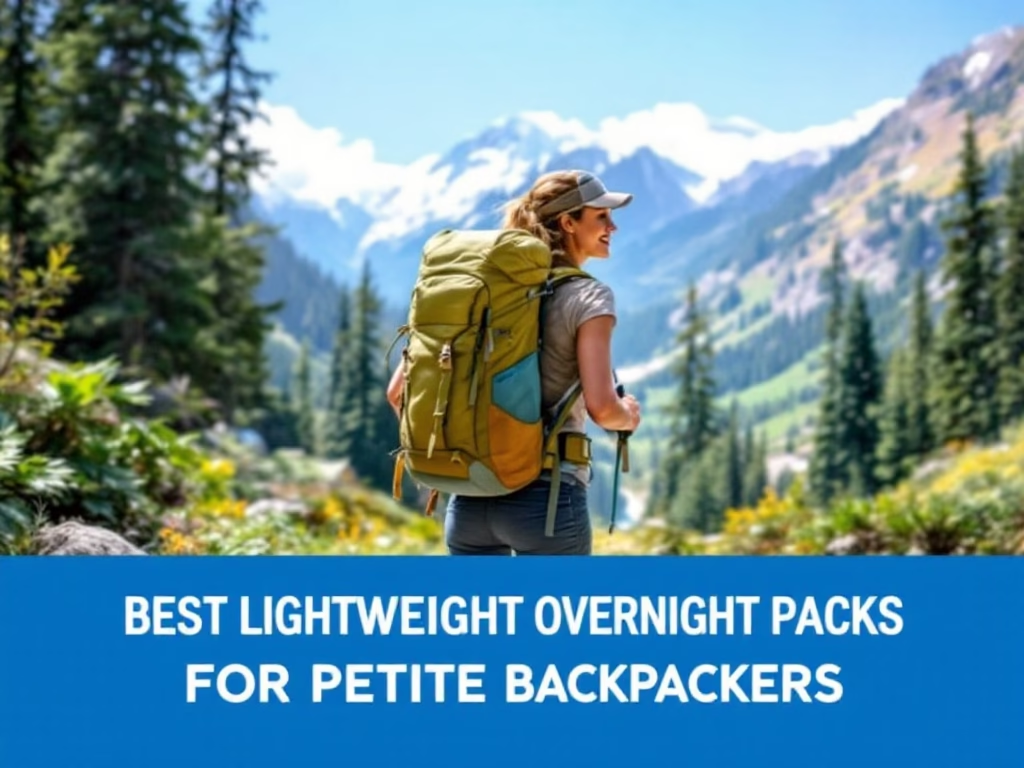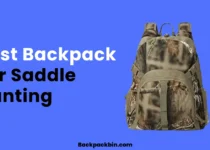Best Lightweight Overnight Packs For Petite Backpackers

Finding the best lightweight overnight packs for petite backpackers can make a world of difference on your next trek. In our Best Lightweight Overnight Packs For Petite Backpackers guide, you’ll discover top picks that balance low weight with the perfect fit for shorter torsos and narrow frames. We’ll walk you through key features like capacity, adjustability, and comfort so you can hit the trail with confidence.
Understand Petite Fitting
Getting the right fit is step one when you shop for a pack that won’t slide or chafe. Here’s what matters most:
Torso Length Matters
Your torso length—measured from C7 vertebra to the top of your hip belt—determines how the pack sits on your back. Packs that adjust down to 14.5 inches are gold for many petite hikers. If you’re not sure how to measure yourself, check out how to measure torso length for hiking packs when you’re petite.
Hip Belt Comfort
A good hip belt should carry about 80 percent of your pack weight. Look for padded, contoured designs that fit narrow hips. You can learn more about dialing in your belt in how to adjust hip belts for a short torso on the trail.
Shoulder Strap Shape
Narrow, S-curve straps tend to follow petite shoulders without digging in. If you’ve ever fussed with slipping straps, read how to prevent shoulder slippage with narrow strap designs.
Compare Top Pack Picks
Below is an at-a-glance comparison of our favorite lightweight overnight packs for petite frames. Scroll down for detailed reviews.
| Pack Model | Capacity | Weight | Torso Fit | Ideal Use |
|---|---|---|---|---|
| Gossamer Gear Mariposa 60 | 60 L | 2 lb 14 oz | 14 – 19 in | 1–2 night adventures |
| Gossamer Gear Gorilla 50 | 50 L | 2 lb 3 oz | 14 – 19 in | Tech-savvy ultralighters |
| Hyperlite Southwest 55 L | 55 L | 1 lb 14 oz | Fixed (33 cm) | Thru-hikes, long loops |
| Zpacks Arc Haul Ultra 50 L | 50 L | 1 lb 6 oz | Interchangeable | Minimalist overnights |
| Osprey Exos Pro 55 | 55 L | 2 lb 3 oz | 15 – 20 in | Comfort-focused ultralight |
| Six Moon Designs Swift V | 55 L | 2 lb 6 oz | 14 – 18 in | Gear-heavy trips |
Gossamer Gear Mariposa 60
Weight: 2 lb 14 oz | Ideal for: hikers who need a little extra room
Pros
- Thoughtful external pockets for quick-grab snacks
- Removable aluminum stay for custom balance
- Mesh back panel for airflow
Cons
- Larger capacity can encourage overpacking
- Minimal rain protection without pack cover
This 60 L pack strikes a sweet spot between volume and weight. Its adjustable torso length and hip belt allow you to dial in a snug fit, so your center of gravity stays close to your back.
Gossamer Gear Gorilla 50
Weight: 2 lb 3 oz | Ideal for: ultralighters who still want comfort
Pros
- Padded hip belt with huge pockets
- Internal frame for stability
- Lightweight material resists wear
Cons
- Slightly pricier than other ultralights
- Fewer exterior zipper pockets
The Gorilla 50 borrows all the best bits of the Mariposa but trims capacity to 50 L and weight to just over 2 lb. If you crave external gear access without bulk, this is your go-to.
Hyperlite Southwest 55 L
Weight: 1 lb 14 oz | Ideal for: thru-hikers and fastpackers
Pros
- Ultra-durable Dyneema material
- Water-resistant, seam-taped construction
- Simple roll-top closure
Cons
- Limited organizational pockets
- Rigid design may feel stiff at first
This pack is all about shedding ounces without sacrificing durability. It fits comfortably on a petite back once you trim nonessential features and set a lean base weight.
Zpacks Arc Haul Ultra 50 L
Weight: 1 lb 6 oz | Ideal for: hardcore minimalists
Pros
- Feather-light carbon fiber stay
- Interchangeable shoulder straps
- Sleek, low-profile design
Cons
- Best suited to experienced ultralighters
- No hip belt pockets
If you’ve mastered minimalist packing, the Arc Haul Ultra will practically vanish on your back. You’ll need to pair it with a solid sleeping quilt to keep base weight under control.
Osprey Exos Pro 55
Weight: 2 lb 3 oz | Ideal for: comfort seekers in ultralight gear
Pros
- Innovative back-panel suspension
- Soft spacer mesh for breathability
- External hydration sleeve
Cons
- Slightly heavier than Dyneema packs
- Pockets could be more accessible
Osprey’s Exos Pro leverages a supportive suspension system that’s surprisingly light. It’s a great bridge between traditional comfort and ultralight ethos—especially if you value creature comforts on the trail.
Six Moon Designs Swift V
Weight: 2 lb 6 oz | Ideal for: those who carry extra gear
Pros
- Huge front pocket for tent or jacket
- Wide hip belt pockets
- Adjustable torso from 14 to 18 in
Cons
- Extra volume adds temptation to overpack
- Back panel foam can feel firm
If you tend to haul bulkier gear, the Swift V balances capacity, fit, and lightness. Its modular design lets you flip between quick-access pockets and gear loops in seconds.
Consider Capacity And Weight
Picking the right volume and weight for your overnight adventures keeps your base weight in check. Aim for these guidelines:
- 30–45 L: 1-night trips, fastpacks
- 45–55 L: 1–2 night weekend trips
- 55–65 L: 2–3 night routes
- Pack weight goal: under 20 percent of your body weight
- Base weight target: 10–15 lb for most petite hikers
Of course, how you pack makes a big difference too. For more on trimming ounces, see packing light: minimalist strategies for petite hike.
Optimize Trail Comfort
A lightweight pack only works if it feels good mile after mile. Here are quick tips:
- Balance load lifters to keep weight off your shoulders
- Center heavy items close to your spine for stability
- Ensure your hip belt supports 80 percent of the load
- Look for ventilated back panels or mesh to reduce sweat
- Choose accessible hydration sleeves or side pockets
Want more on hydration setups? Check how to fit hydration systems into small hiking backpacks. And if heat is your nemesis, don’t miss backpack ventilation solutions for petite women on hot trails.
Frequently Asked Questions
What capacity should an overnight pack have?
For a single night, 30–45 L usually suffices. If you plan a two-night trip, aim for 45–55 L so you don’t cram your gear.
How do I know my torso length?
Measure from the bony bump at the base of your neck (C7) down to your hip belt line. Many packs list adjustable ranges—pick one that brackets your number.
Can I use a travel pack for hiking?
Yes, but make sure it has a supportive frame, padded hip belt, and hydration compatibility. Travel packs often lack ventilation and load lifters, so weigh pros and cons.
How much should my loaded pack weigh?
Aim for a base weight under 20 percent of your body weight. That usually means a total pack weight—the pack plus consumables—of 25–30 percent at most.
Are ultralight packs worth the cost?
If you’re planning fastpacking or multi-day adventures, the ounce savings add up. But beginners may prefer a slightly heavier pack with more pockets and comfort features.
How do I care for a lightweight backpack?
Spot clean with mild soap and water, air–dry away from direct sun, and store loosely to preserve fabric and frames. Avoid machine washing if possible.
Final Thoughts And Summary
Choosing one of the best lightweight overnight packs for petite backpackers boils down to fit, weight, and how you pack. The Gossamer Gear line offers a solid balance of features and comfort, Hyperlite and Zpacks push the limits on weight, and Osprey’s Exos Pro brings familiar comfort into the ultralight realm. Six Moon Designs’ Swift V gives you room to grow on multi-day trips.
No matter which you pick, dialing in your torso length, hip belt position, and load distribution will make every mile feel easier. Now that you’ve seen the top contenders, grab your favorite, test it at home, and get ready to enjoy lighter shoulders and longer days on the trail. Happy hiking!


